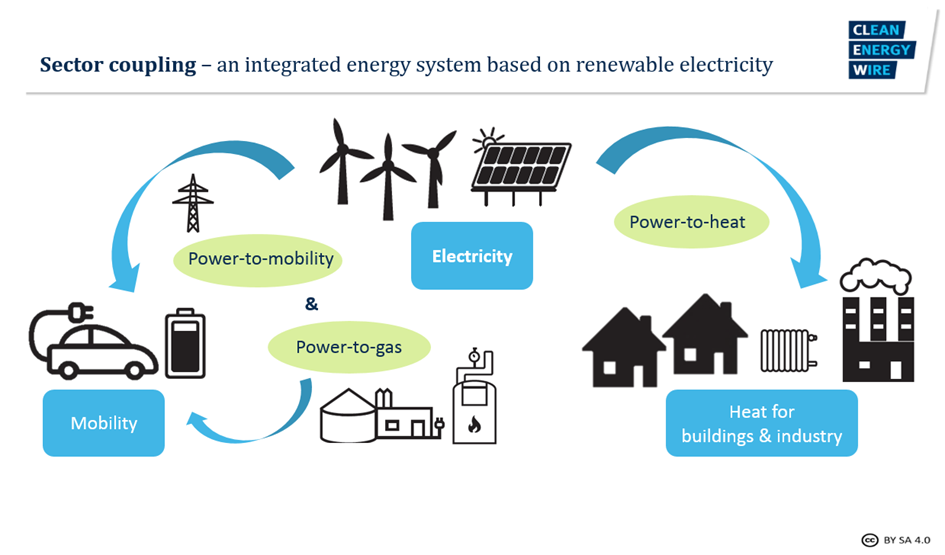Sector coupling is increasingly being used as a buzz word, which promises to decarbonise our economies and help the European Union meet its international climate targets. At the same time, it is deemed to have the potential of ensuring our energy security while also making it possible to keep energy prices stable.[1] Given the geopolitical instability Europe is facing at the moment, interest in renewable energy sources and new energy system approaches such as sector coupling are quickly growing in popularity.
But what is sector coupling? There is still some ambiguity regarding the term with both narrow and holistic definitions of the concept being applied.[2] While there is some diversity across the spectrum, the distinction generally lies between sector coupling being viewed as end-use or as cross-vector integration. This difference has a substantial impact on the technologies needed for sector coupling to be achieved and also on the extent of change to be undertaken on the energy system.
End-use sector coupling involves the electrification of energy demand while reinforcing the interaction between electricity supply and end-use. An example of this would be using electricity generated from renewable energy sources (such as solar power) to run electric vehicles. In addition to reducing CO2 emissions, this approach has the added benefit that electric devices also tend to be more efficient than fossil fuel-based alternatives. At the same time, one of the biggest hurdles of the past – namely the high cost of generating electricity from renewable sources – is also largely being overcome due to immense price hikes for conventional electricity sources.
Cross-vector coupling refers to the integrated use of different energy infrastructures and vectors, in particular electricity, heat and gas.[3] This can either be done on the supply side, e.g., through conversion of (surplus) electricity to hydrogen, or at the demand side, by using residual heat from power generation or industrial processes for district heating for instance. Cross- vector is likely to provide the energy system with increased flexibility to cope with fluctuations in energy demand and renewable energy supply. At the same time, it is also associated with costly investments and requires a fundamental change to our energy system.
While sector coupling has the potential of revolutionising our economies, it still has to overcome one major challenge: renewable sources such as wind and solar energy are rather unpredictable and renewable energy is not always available when needed. How can one rely on solar panels to charge one’s car on a rainy winter day? The answer to this question lies in the use of storage solutions. By using batteries or other storage methods, renewable energy sources can be integrated into our energy systems and ensure steady consumption throughout the year. Energy storage is therefore a key puzzle piece in the larger sector coupling puzzle. This topic will be explored in August’s blog on storage solutions.

[1] Sector coupling: how can it be enhanced in the EU to foster grid stability and decarbonise? (europa.eu)
[2] The sector coupling concept: A critical review (tuwien.ac.at)
[3] Sector coupling: how can it be enhanced in the EU to foster grid stability and decarbonise? (europa.eu)